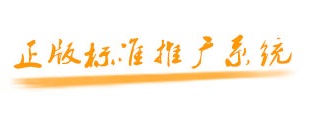BSI发布了修订后的国际食品安全标准,以应对食品供应链不断变化的挑战
英国标准协会(BSI)发布了修订后的国际食品安全管理标准。ISO22000:2018食品安全管理体系——对食物链中各组织的要求提供了基于各种组织的最佳实践框架,即包括从小型家庭农场到跨国食品服务机构网点,旨在实施综合食品安全管理体系
据世界卫生组织估计,每年有十分之一的人由于食品污染生病,更有42万人死于食物污染。ISO22000的更新版本于2005年首次发布,旨在通过帮助食品组织实施食品安全管理体系来抵御潜在的危险和导致污染的风险,从而减少这种情况。
当今食品生产漫长而复杂的供应链导致了食品安全事故和恐慌,影响消费者并给组织造成经济损失。因此,对整个食物链进行适当的控制至关重要。计划-实施-检查-行动周期能够管理商业风险,HACCP能够识别、预防和控制食品安全危害,ISO 22000通过将二者相结合
来帮助组织减少风险,提高安全性。
BSI可持续发展和食品部门主管大卫.法斯克(David Fatscher)说:“ISO 22000是一个满足全球需求的国际化标准:这个食品安全管理体系认识到了食品供应链正在日益国际化,超市里存有在新西兰屠宰的羔羊和在秘鲁采摘的芦笋都是很常见的。
“实施ISO 22000的组织能够向顾客和供应商证明其承诺提供符合法律法规的安全食物和服务,并且符合国际认可的食物安全管理体系。”
该项标准的结构对食品安全管理有操作性要求,即:操作规划和控制;危害控制和控制计划;和更新控制。ISO 22000规定了食品安全管理体系的要求,使食物链中的各组织能够:
1. 规划、设计、操作、维护和更新食品安全管理体系,根据预期用途提供安全的产品和服务
2. 证明其符合适用的食品安全法定监管要求
3. 评估认证双方同意的顾客食品安全要求,并证明符合要求
4. 就食品安全问题与食物链中的相关方有效沟通
5. 确保组织符合其声明的食品安全政策
6. 证明符合相关利益方的要求
7. 向外部组织申请食品安全管理体系认证或注册,或者进行符合标准的自我评估或自我声明
ISO 22000的要求适用于食物链中规模不同、复杂性各异的所有组织。它可以帮助农民、食品制造商、零售商、动物食品制造商和野生动植物采集者通过嵌入一个有助于食源性疾病预防和产品召回的体系,来保护他们的生计。该标准也适用于提供食品服务、餐饮服务、
清洁卫生服务、运输和食品包装材料的组织。
这项修订后的标准还可以帮助各组织支持联合国可持续发展目标的目标2,减少粮食危害,改善粮食安全,确保人们能够获得安全、营养和充足的粮食。
International food safety standard revised to meet the evolving challenges of the food supply chain
BSI, the business standards company, has published the revised international standard for food safety management. ISO 22000:2018 Food safety management systems - requirements for any organization in the food chain provides a framework based on best practice for any organization, from a small, family-owned farm to a multi-national food service outlet, to implement a comprehensive food safety management system.
The World Health Organization estimates that one in ten people fall ill and 420,000 die because of contaminated food every year. The updated version of ISO 22000, first published in 2005, works to reduce this by helping food organizations implement food safety management systems that defend against the potential hazards and risks that lead to contamination.1
Long and complex supply chains in today’s food production systems have led to food incidents and scares which impact consumers and cause economic loss to organizations. Adequate control throughout the food chain is therefore essential. By combining the Plan-Do-Check-Act cycle to manage business risk with HACCP to identify, prevent and control food safety hazards, ISO 22000 helps organizations to reduce exposure to risk and improve safety.
David Fatscher, Head of Sustainability and Food at BSI, said: “ISO 22000 is a global standard which addresses a global need: a food safety management system which recognizes that food supply chains are increasingly cross-border, with a typical supermarket stocking lamb slaughtered in New Zealand and asparagus picked in Peru.
“An organization implementing ISO 22000 is able to demonstrate to its customers and suppliers a commitment to providing safe foods and services that meet statutory and regulatory requirements, and conformity to an internationally recognized food safety management system.”
The standard has a structure for the operational requirements of food safety management, namely: operational planning and control; hazard control and control plans; and the updating of controls. ISO 22000 specifies requirements for a food safety management system enabling organizations in the food chain to:
1. Plan, implement, operate, maintain and update a food safety management system providing products and services that are safe, according to their intended use
2. Demonstrate compliance with applicable statutory and regulatory food safety requirements
3. Evaluate and assess mutually agreed customer food safety requirements and demonstrate conformity to them
4. Effectively communicate food safety issues to interested parties within the food chain
5. Ensure that the organization conforms to its stated food safety policy
6. Demonstrate conformity to relevant interested parties
7. Seek certification or registration of food safety management systems by an external organization or make a self-assessment or self-declaration of conformity to the standard
The requirements of ISO 22000 are applicable to all organizations in the food chain, irrespective of their size or complexity. It can help farmers, food manufacturers, retailers, animal food producers and harvesters of wild plants and animals protect their livelihood by embedding a system that helps prevent foodborne illness and product recalls. The standard is also of relevance to organizations providing food services, catering services, cleaning and sanitation services, transportation and food packaging materials.
This revised standard can also help organizations to support Goal 2 of the UN Sustainable Development Goals, by reducing food hazards and improving food safety to ensure access to safe, nutritious and sufficient food.
版权所有 侵权必究
- 主管:国家标准化管理委员会
- 主办:国家标准化管理委员会标准信息中心
- 运营:北京中标赛宇科技有限公司
- 经营许可证编号 京ICP证 号
- 盗版侵权 举报热线:400-650-6190
网站地图
- 国家标准化管理委员会
友情链接
- 中国科技资源网
关于我们
- 技术团队
- 合作伙伴
- 法律声明
- 知识产权





